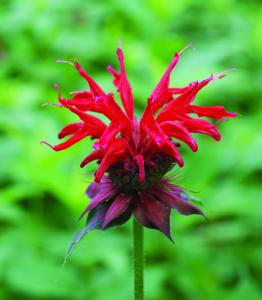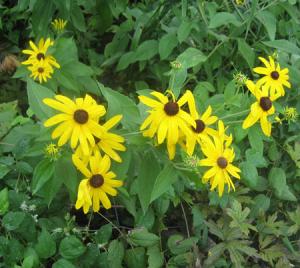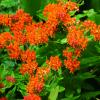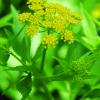You may not know it, but the plants in your garden might be harmful to the environment. We learn how growing plants native to Illinois can boost the local ecosystem on Chicago Tonight at 7:00 pm.
Interested in growing your own native plant garden? Dora Aalbregtse of the Chicago Botanic Garden gave Chicago Tonight tips on how to get one started. Read her recommendations and view our photo slideshow of plant species native to the Midwest.
10 Tips For Growing Your Own Native Garden:
-
 Do your research: There’s a reason some plants prosper in certain environments– they’re suited to adapt to a specific climate, landscape and soil condition. You can find information about Illinois’ natural vegetation and which plants would best suit your garden through the Chicago Botanic Garden’s website or the Missouri Botanical Garden’s website. For more on invasive species that could hamper gardening, check on the Illinois Department of Natural Resources website.
Do your research: There’s a reason some plants prosper in certain environments– they’re suited to adapt to a specific climate, landscape and soil condition. You can find information about Illinois’ natural vegetation and which plants would best suit your garden through the Chicago Botanic Garden’s website or the Missouri Botanical Garden’s website. For more on invasive species that could hamper gardening, check on the Illinois Department of Natural Resources website.
-
Establish your site: There are a lot of factors that will determine which plant species you should grow. When planning a native garden, consider existing plants that may already be adapted to a site, the amount of sun exposure, the soil type they’ll grow in and how much moisture the site can hold.
-
Draw your garden out on paper: It’s always helpful to draw out your plans on paper, including the size of your garden and which plants you want in it. Doing so lets you visualize what the garden will look like. The natural gardening rule of thumb is, “the first year, the plants sleep; the second year, they creep; and the third year, they leap.” That means it could take up to two years for your garden to look the way you planned.
-
 Find somewhere to buy your plants: It’s a good idea to get plants that have been grown in the general area. The plants will last longer, because they’ve been raised in the area. Aalbregtse recommends Northwind Perennial Farms, Natural Garden Natives and Prairie Moon Nursery. For those interested in growing their garden from seeds, make sure to research how best to plant each species, because certain plant seeds need very specific preparations.
Find somewhere to buy your plants: It’s a good idea to get plants that have been grown in the general area. The plants will last longer, because they’ve been raised in the area. Aalbregtse recommends Northwind Perennial Farms, Natural Garden Natives and Prairie Moon Nursery. For those interested in growing their garden from seeds, make sure to research how best to plant each species, because certain plant seeds need very specific preparations.
-
Prepare your site: Once you’ve established where your garden will be, weed it all out. If you’re planning to make a new bed, use a sod cutter to cut up the earth. Don’t overturn your soil. It’s a mistake a lot of new gardeners make. By overturning, you’re disturbing the microorganisms in the soil, and you could disturb weed seeds that are buried deep in the soil.
-
Know how far to space your plants: Before you start planting, research how much space each plant needs to grow properly. Different plants need different amounts of space to establish their roots and prosper. If you plant plants too close to each other, they could compete for nutrients and root space.
-
 Don’t bother with fertilizer: Once the area is weeded and turned, Aalbregtse recommends using compost when planting your new plants, not mulch or fertilizer, because the compost acts as a natural fertilizer and holds water better.
Don’t bother with fertilizer: Once the area is weeded and turned, Aalbregtse recommends using compost when planting your new plants, not mulch or fertilizer, because the compost acts as a natural fertilizer and holds water better.
-
Water the new garden regularly: When you do put in a new garden, it will require close watering for the first year until the plants can establish themselves.
-
Weed regularly the first year: When you’re first establishing you’re native garden, you want to make sure there aren’t any invasive species hampering its growth. Weed on a routine basis until your plants are established.
- Once the garden is established, don’t over-water it: Native gardens require less water, because since the plants are native to the area, they’re suited for the climate. They won’t need as much water, especially prairie plants.














